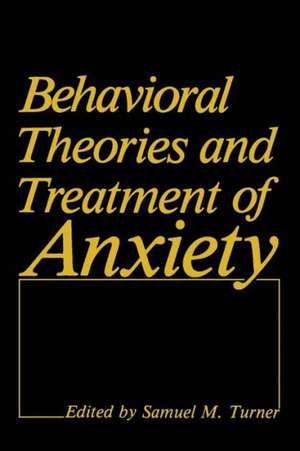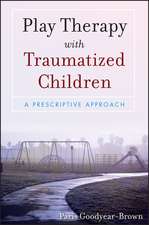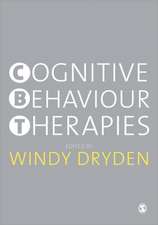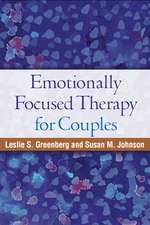Behavioral Theories and Treatment of Anxiety
Editat de Samuel M. Turneren Limba Engleză Paperback – 19 mar 2012
Preț: 376.22 lei
Preț vechi: 396.02 lei
-5% Nou
Puncte Express: 564
Preț estimativ în valută:
71.100€ • 74.89$ • 59.44£
71.100€ • 74.89$ • 59.44£
Carte tipărită la comandă
Livrare economică 14-28 aprilie
Preluare comenzi: 021 569.72.76
Specificații
ISBN-13: 9781468446968
ISBN-10: 1468446967
Pagini: 456
Ilustrații: XVIII, 438 p.
Dimensiuni: 152 x 229 x 24 mm
Greutate: 0.6 kg
Ediția:Softcover reprint of the original 1st ed. 1984
Editura: Springer Us
Colecția Springer
Locul publicării:New York, NY, United States
ISBN-10: 1468446967
Pagini: 456
Ilustrații: XVIII, 438 p.
Dimensiuni: 152 x 229 x 24 mm
Greutate: 0.6 kg
Ediția:Softcover reprint of the original 1st ed. 1984
Editura: Springer Us
Colecția Springer
Locul publicării:New York, NY, United States
Public țintă
ResearchCuprins
1 Behavioral Theories of Anxiety Disorders.- The Scope of Anxiety Disorders.- Behavioral Theories of Anxiety Events.- Theories Involving Anxiety Constructs.- Future Directions.- Summary.- References.- 2 Measurement of Anxiety.- Conceptualizations of Anxiety.- Anxiety Measurement Methods.- Anxiety Assessment in Children.- Preliminary Screening and Assessment Procedures.- A Case Study.- Summary and Conclusions.- References.- 3 Simple Phobia.- Defining Characteristics.- Theories.- Assessment of Simple Phobias.- Various Treatment Approaches.- Systematic Desensitization.- Implosive Therapy.- Flooding.- Reinforced Practice.- Modeling Procedures.- Cognitive Therapies.- Choosing the Appropriate Treatment Procedures and Parameters.- Summary and Conclusions.- References.- 4 Agoraphobia.- Definition and Description.- Assessment of Agoraphobia.- Treatment of Agoraphobia.- Conclusions.- References.- 5 Panic Disorder: Medical and Psychological Parameters.- Panic Disorder as a Psychiatric Condition.- Differential Diagnostic Problems.- Related Conditions—The Hyperventilation Syndrome.- Medical Conditions Presenting with Panic.- Behavioral Treatment of Panic.- Conclusions.- References.- 6 Obsessive-Compulsive Disorders.- Epidemiology.- Relationship to Other Disorders.- Cognitive Factors in Obsessive-Compulsive Disorder.- Obsessive-Compulsive Disorder and Anxiety.- Assessment of Obsessions and Compulsions.- Treatment.- Summary.- References.- 7 Generalized Anxiety Disorder.- Symptom Expression.- Symptom Severity.- Types of Anxiety Management Programs.- Model of Generalized Anxiety.- References.- 8 Social Phobia.- The Nature and Prevalence of Social Phobia.- Explanation of Social Phobia: Its Cause and Maintenance.- Therapy.- Summary.- References.- 9 School Phobia.- Diagnostic Issues.-Incidence.- Etiological Considerations.- Assessment Issues.- Treatment Issues.- Prevention.- Summary and Conclusions.- References.- 10 Anxiety Disorders in Childhood.- Definitions.- Etiology.- Assessment.- Treatment of Anxiety Disorders in Children.- Treatment Outcome.- Clinical Recommendations.- References.











